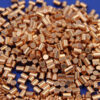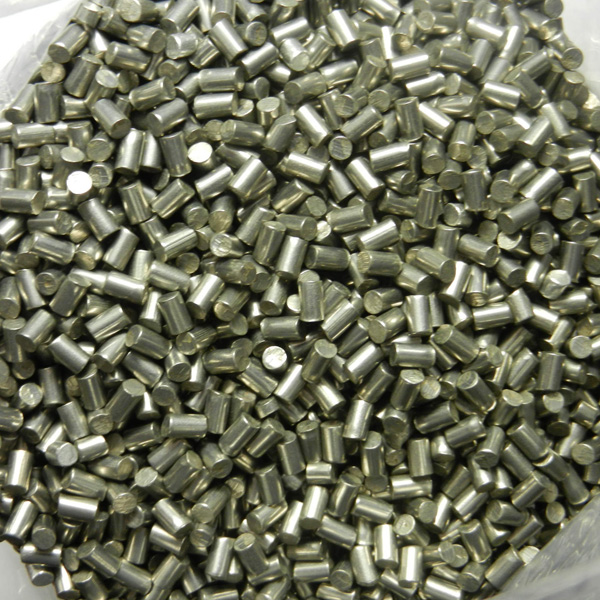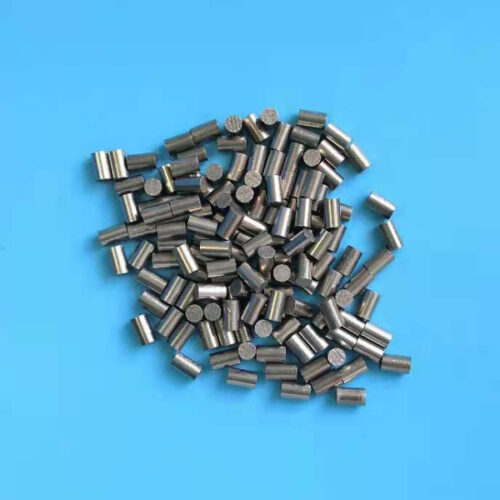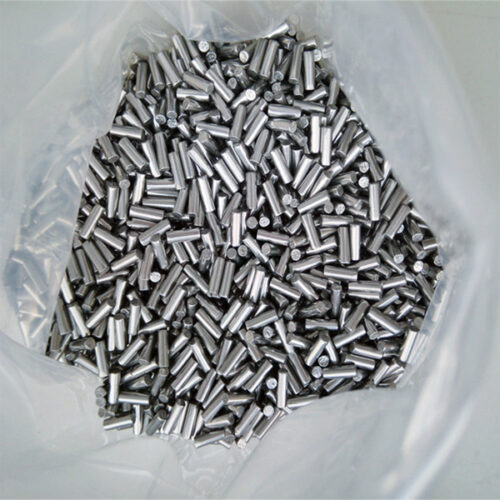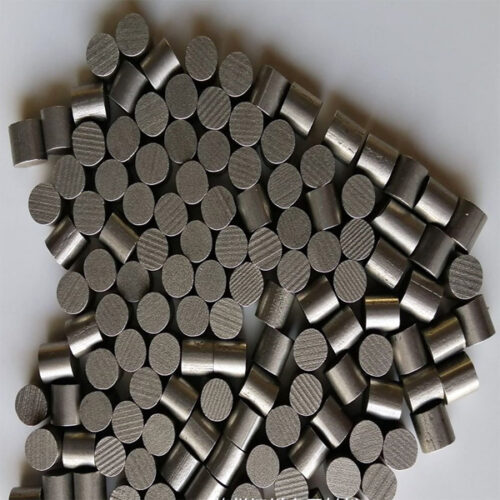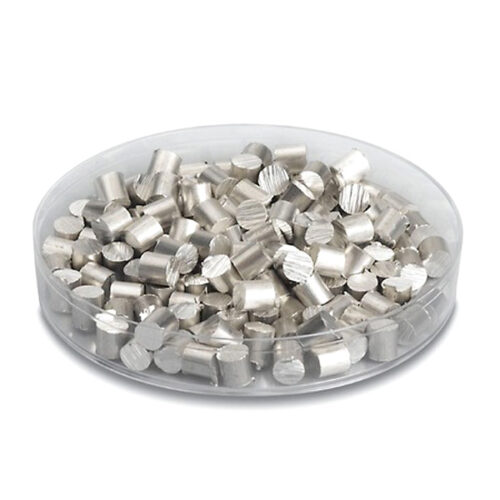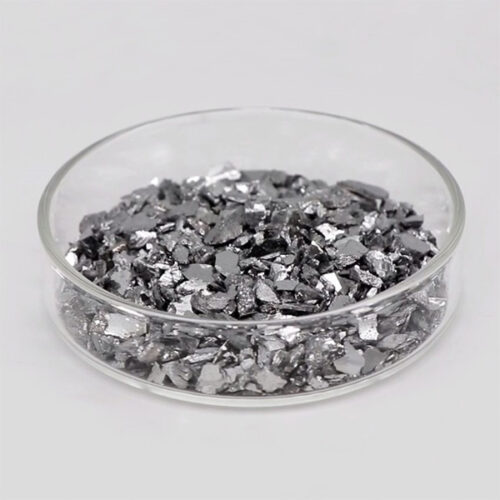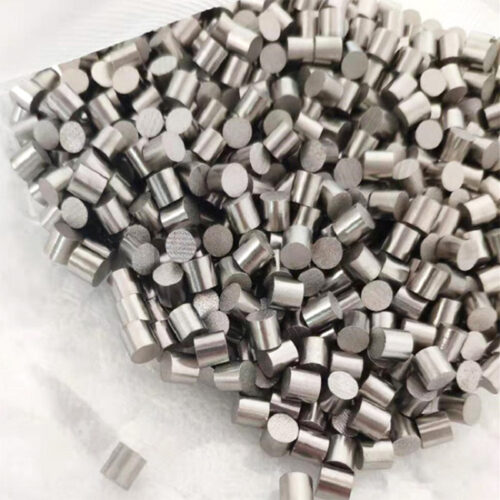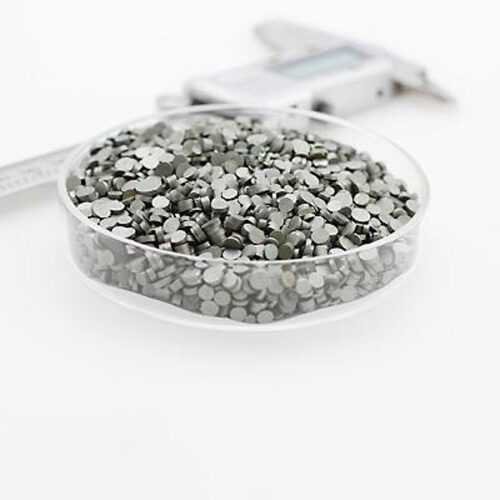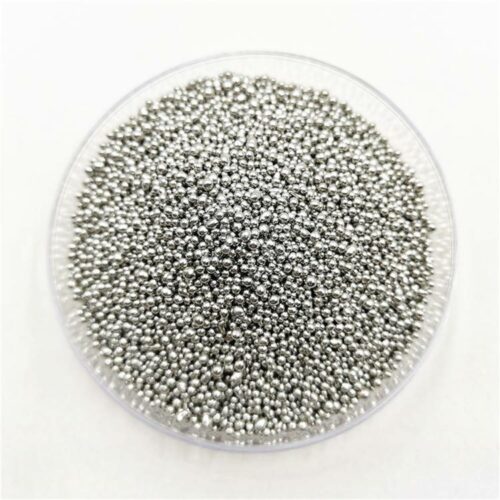5N (99.999%) Aluminum (Al) Pellets Evaporation Materials
Introduction:
Aluminum evaporation materials refer to materials containing aluminum that are specifically designed for use in the vacuum evaporation process.
During vacuum evaporation, solid aluminum material is heated until it reaches its vaporization temperature, at which point it undergoes sublimation, transitioning directly from a solid to a vapor state. This vaporized aluminum then condenses onto a substrate to form a thin film or coating.
Aluminum evaporation materials are typically manufactured in the form of pellets, granules, or wires, ensuring uniform vaporization and deposition rates.
These materials are commonly used in thin film deposition techniques such as thermal evaporation, electron beam evaporation, and sputtering to produce aluminum coatings with desired properties.
These coatings find applications in various industries, including optics, electronics, aerospace, and automotive, where their reflective, conductive, and protective properties are highly valued.
Properties of Aluminum Evaporation Materials:
1. Physical Properties
Appearance: Aluminum exhibits a characteristic silvery-white metallic appearance.
Lightweight: With a density of 2.7 g/cc, aluminum stands as a lightweight material, ideal for various applications requiring low mass.
Malleability and Ductility: Aluminum’s exceptional malleability and ductility enable easy shaping and forming processes, facilitating its use in intricate designs.
Melting Point: Aluminum’s melting point of 660°C renders it amenable to vaporization for deposition processes.
Vapor Pressure: At 1,010°C, aluminum boasts a vapor pressure of 10^-4 Torr, suitable for vacuum evaporation techniques.
2. Chemical Properties
Reactivity: Despite its reactivity, aluminum forms a protective oxide layer upon exposure to air, enhancing its resistance to corrosion.
Conductivity: Aluminum serves as an excellent conductor of both heat and electricity, contributing to its widespread use in various electrical and thermal applications.
Oxidation Resistance: The oxide layer formed on aluminum surfaces provides robust protection against corrosion, ensuring longevity in diverse environments.
3. Structural Properties
Uniformity: Aluminum evaporation materials exhibit uniform composition and microstructure, crucial for consistent film deposition.
Purity: High-purity aluminum materials are imperative to prevent impurities that could compromise film quality and performance.
Applications:
1. Aerospace Industry
Reflective Coatings: Aluminum deposition forms highly reflective coatings on spacecraft components, satellites, and optical instruments, enhancing thermal management and optical performance.
Protective Layers: Thin aluminum films protect critical aerospace components from environmental degradation, such as thermal cycling and radiation exposure.
2. Automotive Lighting
Headlamp Reflectors: Aluminum evaporation materials contribute to the production of highly reflective surfaces in automotive headlamp reflectors, optimizing light distribution and intensity.
Decorative Trim: Aluminum coatings provide aesthetic appeal and corrosion resistance to automotive exterior trims and accessories.
3. OLED Manufacturing
Transparent Electrodes: Aluminum films serve as transparent electrodes in organic light-emitting diode (OLED) displays, enabling high-performance, energy-efficient lighting solutions in consumer electronics and lighting applications.
Encapsulation Layers: Aluminum deposition encapsulates OLED layers, protecting them from moisture and oxygen ingress, thereby prolonging device lifespan and performance.
4. Optical Industry
Mirrors: Aluminum-coated mirrors find extensive use in optical systems, telescopes, and laser applications, owing to their high reflectivity and durability.
Reflective Surfaces: Aluminum evaporation materials enable the production of reflective surfaces in optical components, enhancing light transmission and efficiency.
Manufacturing Processes of Aluminum Evaporation Materials:
1. Alloy Preparation
Aluminum feedstock undergoes alloying processes to tailor its properties for specific applications, such as enhanced reflectivity or improved adhesion.
2. Evaporation Source Fabrication
Molten aluminum is solidified into desired forms, such as pellets, rods, or wires, suitable for use as evaporation sources in vacuum deposition systems.
Advanced techniques like electron beam melting or powder metallurgy may be employed to fabricate customized evaporation sources with precise compositions and shapes.
3. Vacuum Deposition
In a vacuum chamber, aluminum evaporation materials are heated to their vaporization temperature under controlled conditions.
The vaporized aluminum condenses onto substrate surfaces, forming thin films with tailored properties, such as reflectivity, conductivity, or adhesion strength.
Specification:
Our standard size are 3mm Diameter x 3mm Length and 6mm Diameter x 6mm Length, and other specifications are also available.Please consult our professional customer service personnel for detailed information.
Our standard packaging sizes include 50 grams, 100 grams, 200 grams, 300 grams, 500 grams, and 1000 grams.
ZYLAB offers a variety of crucibles for evaporation materials.

